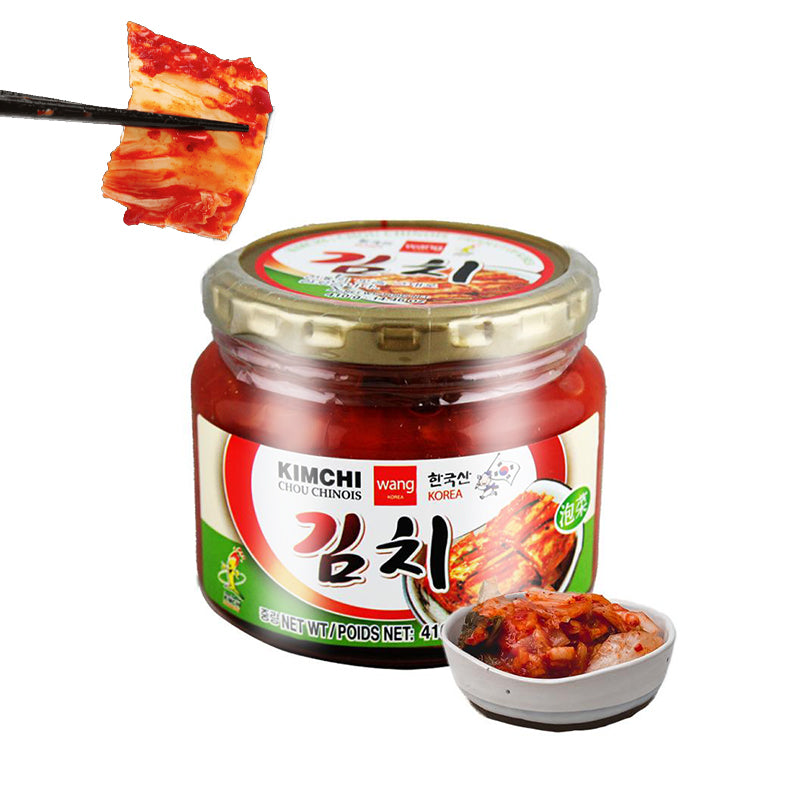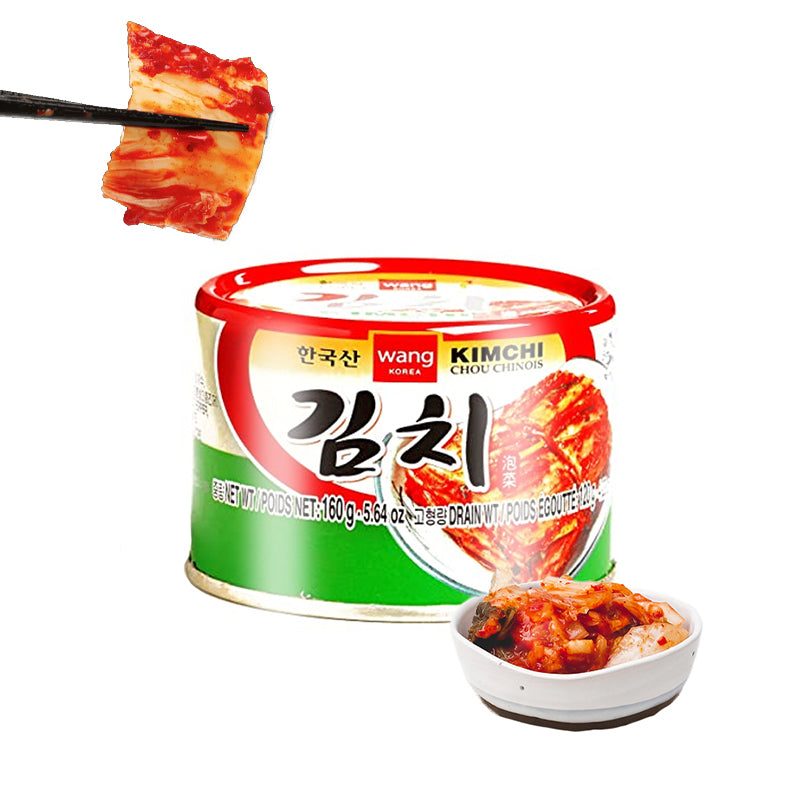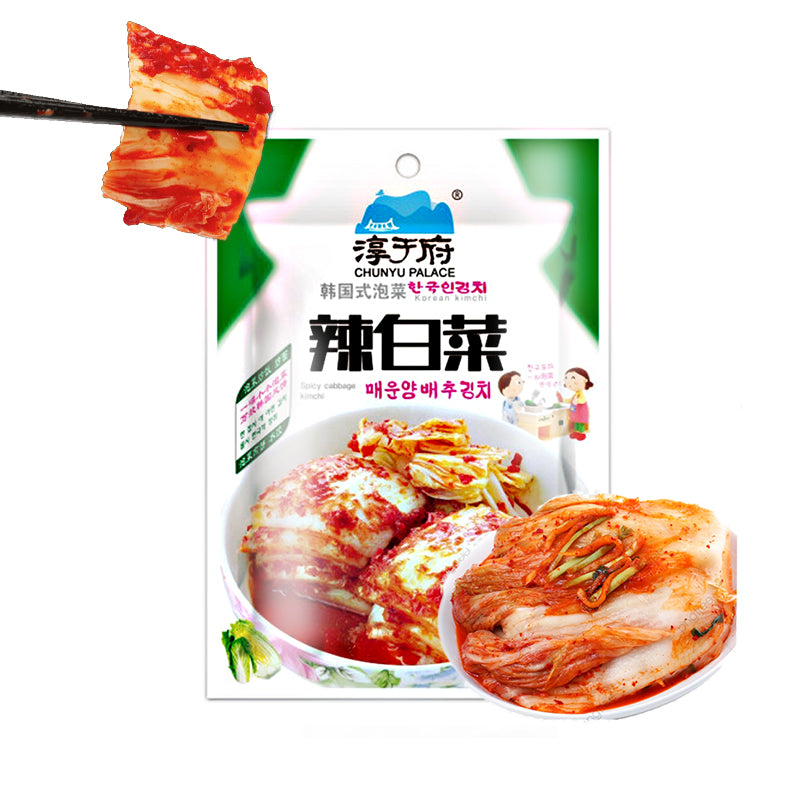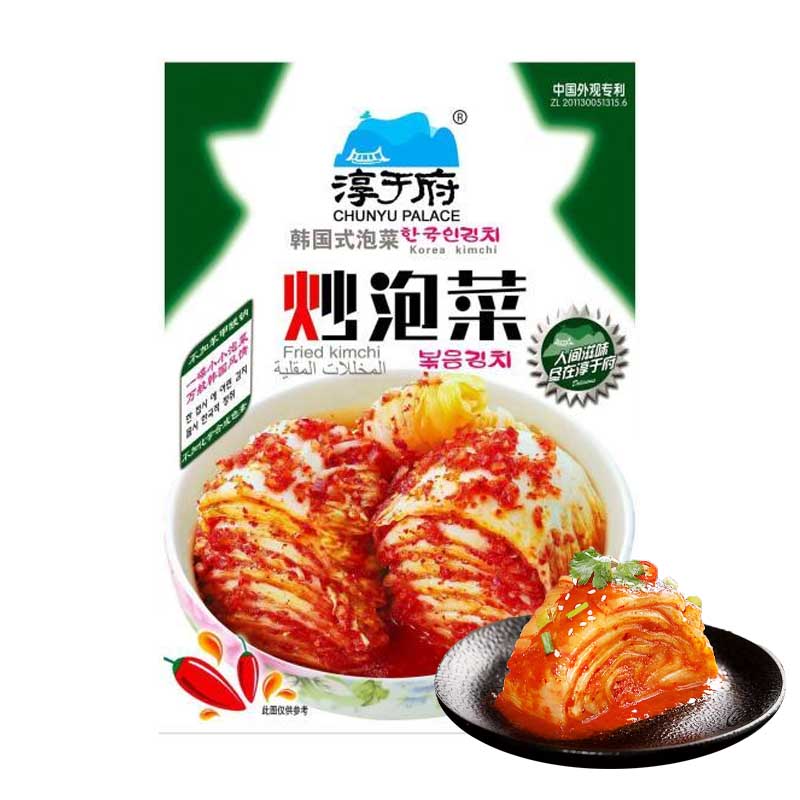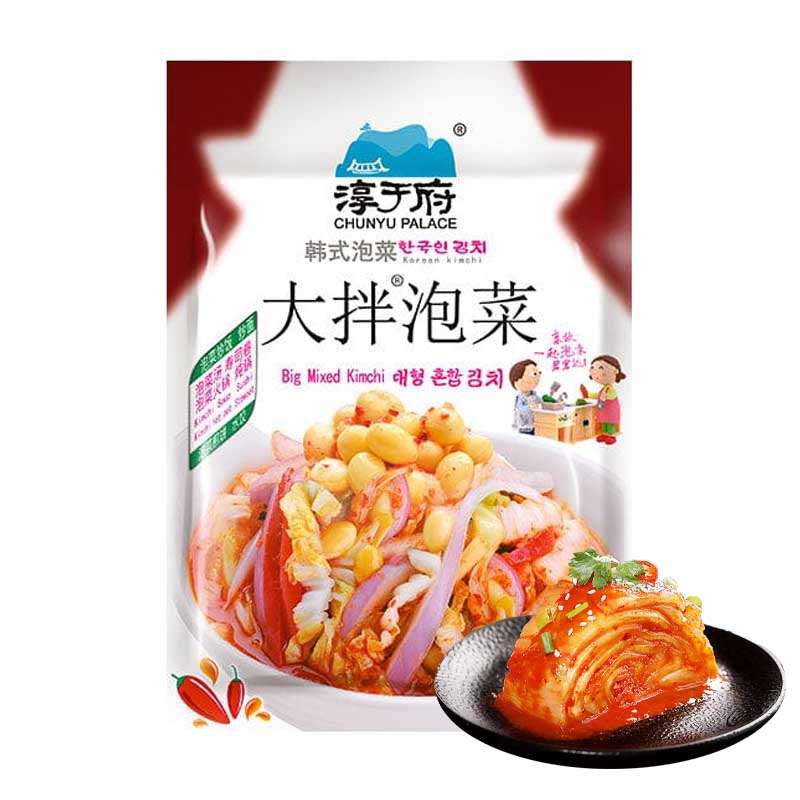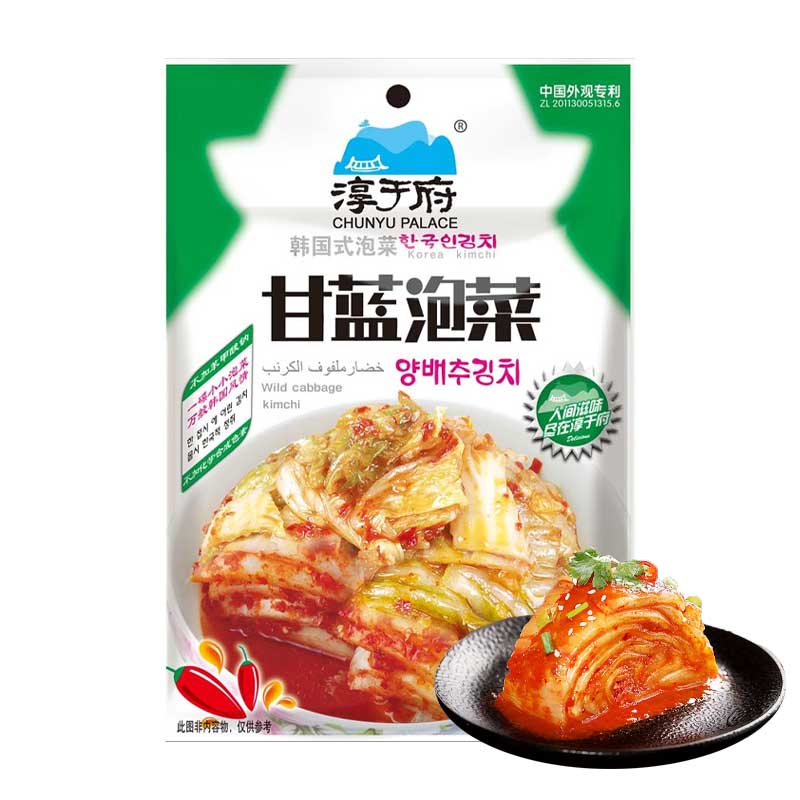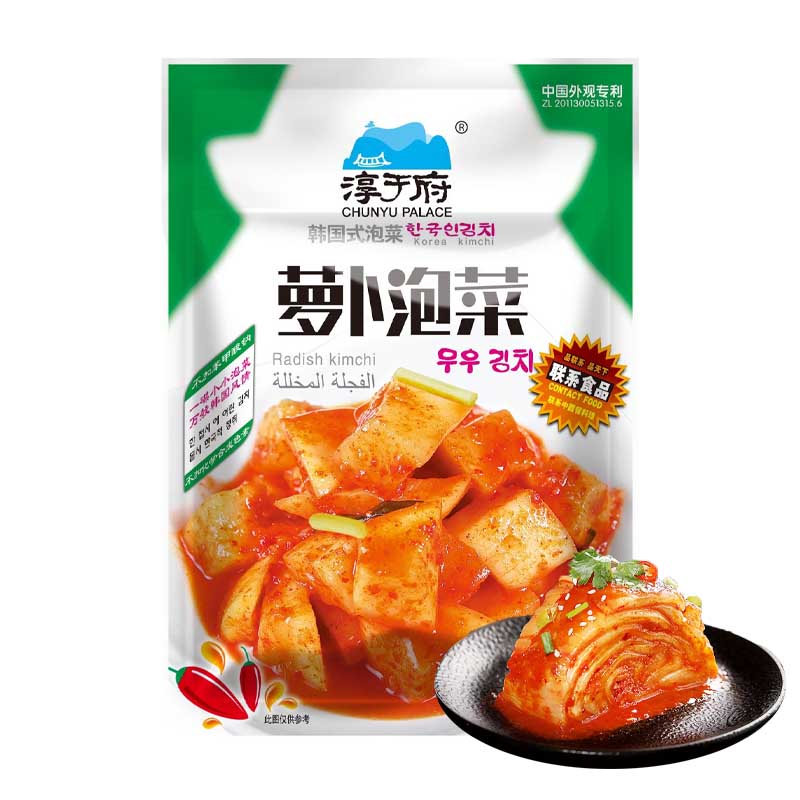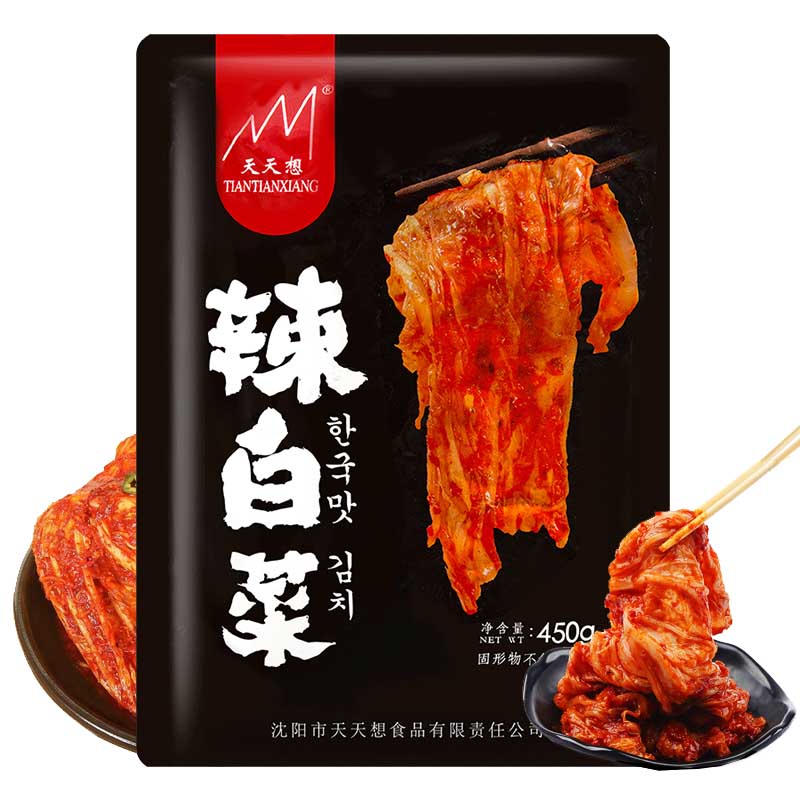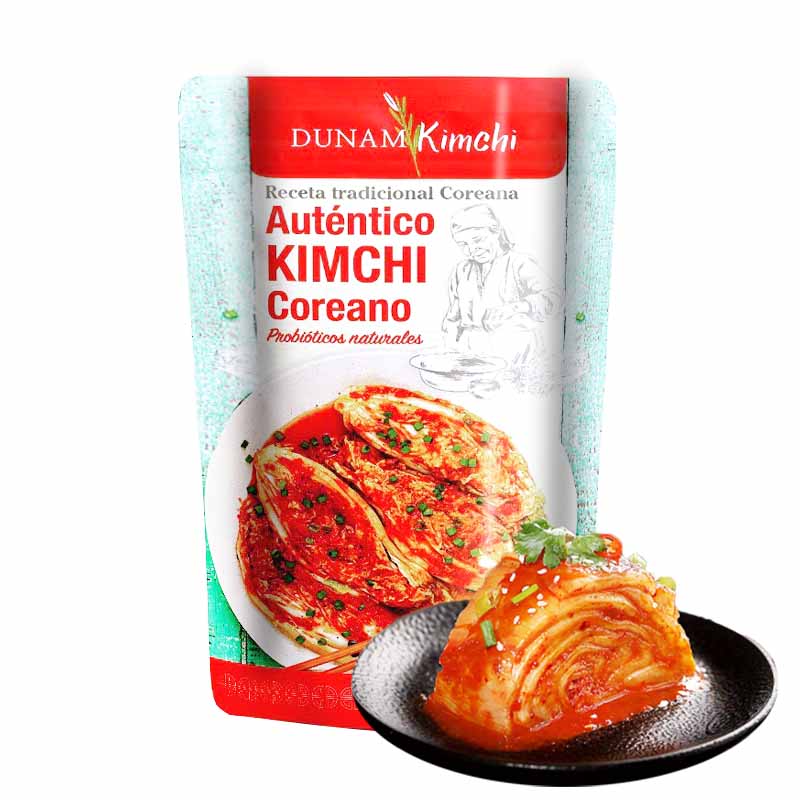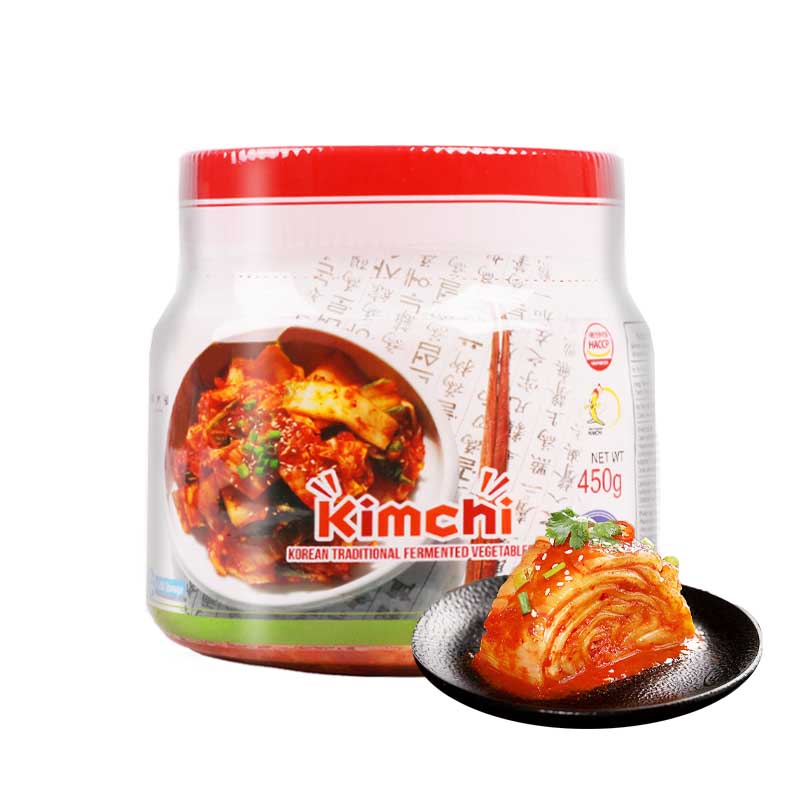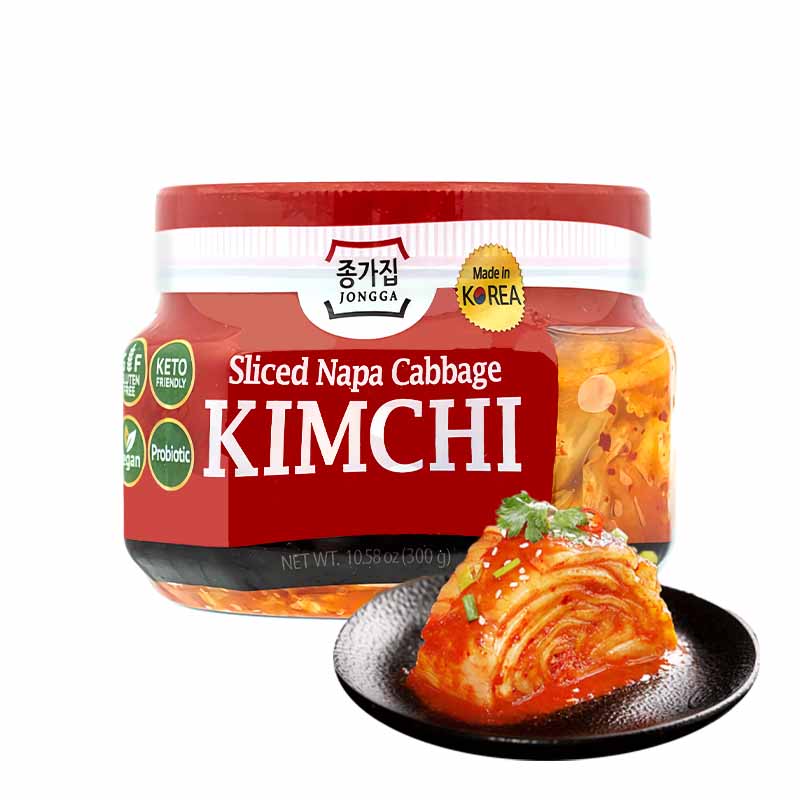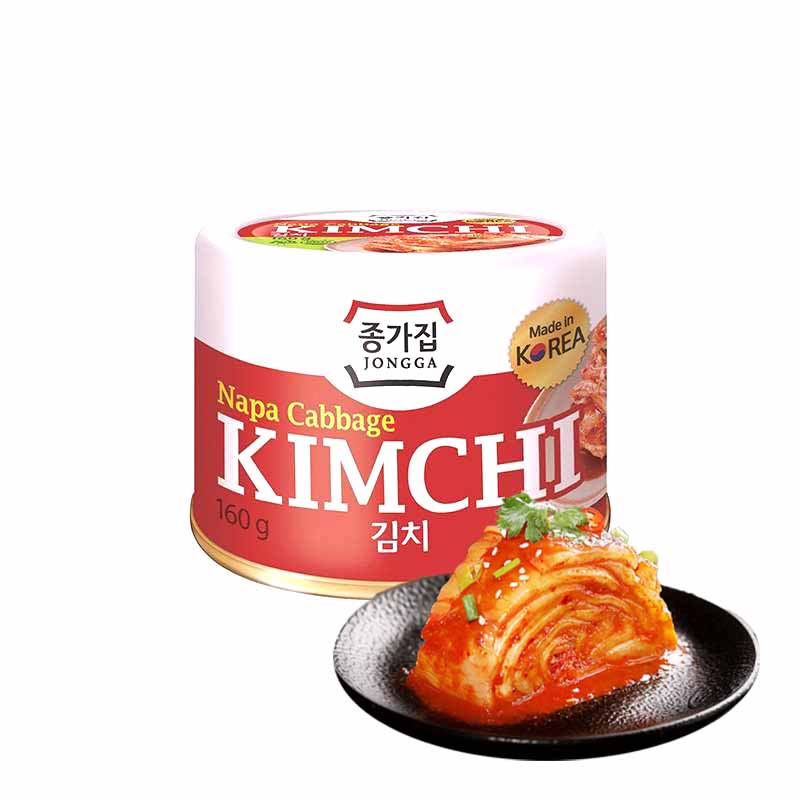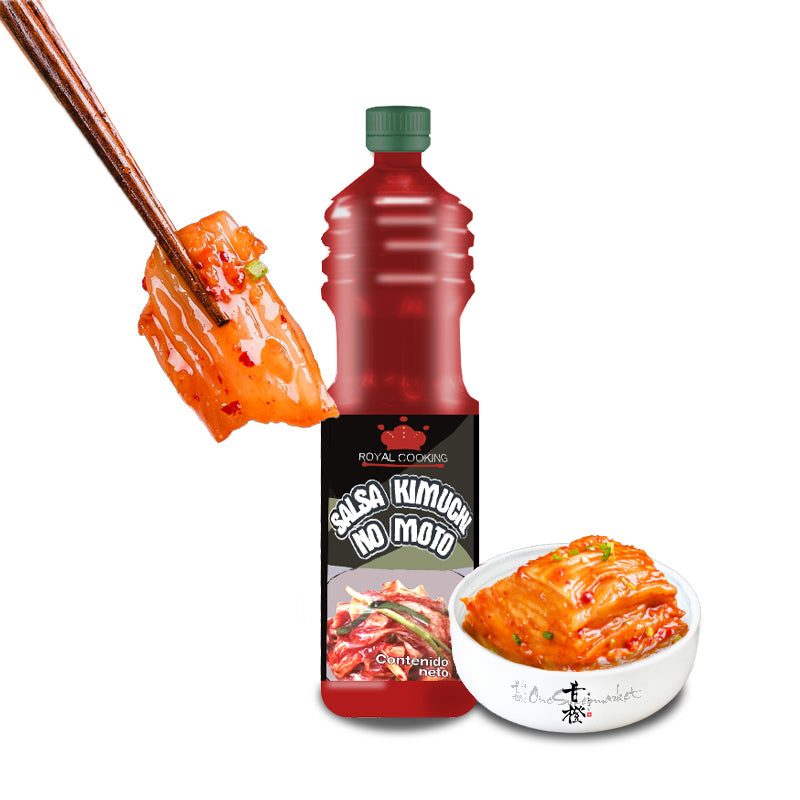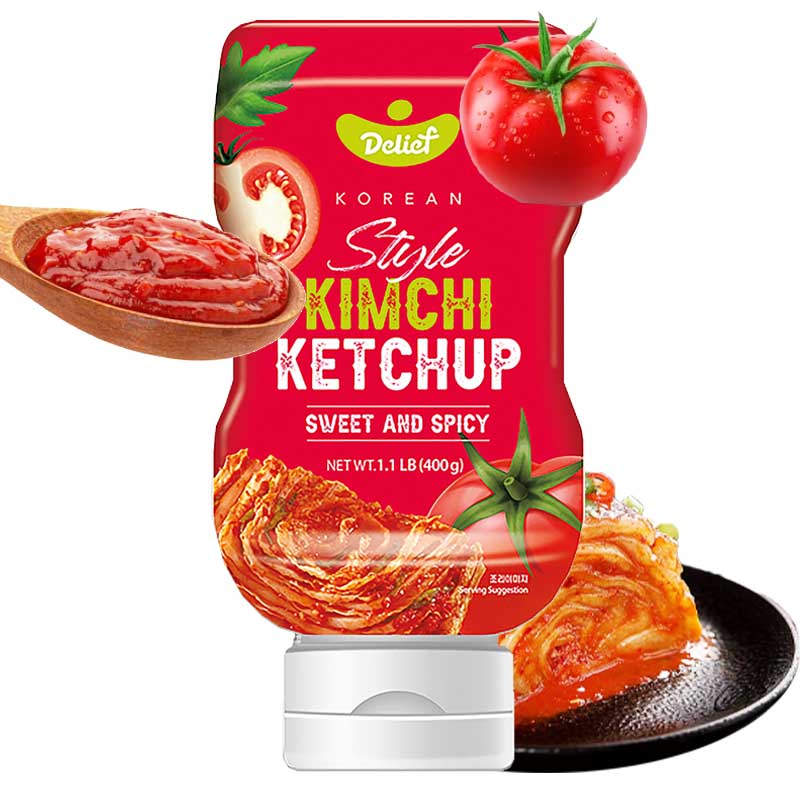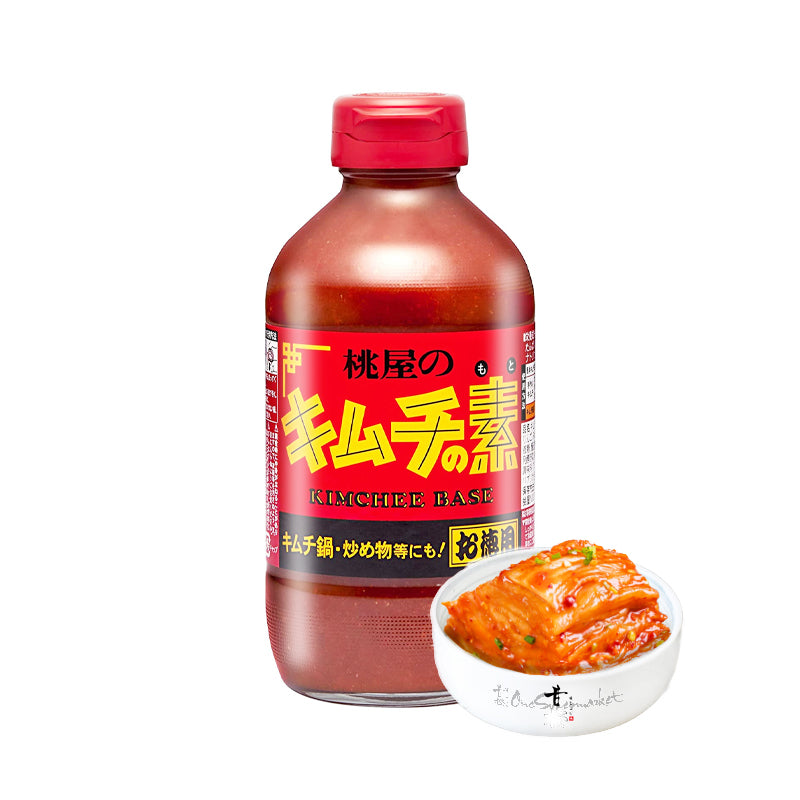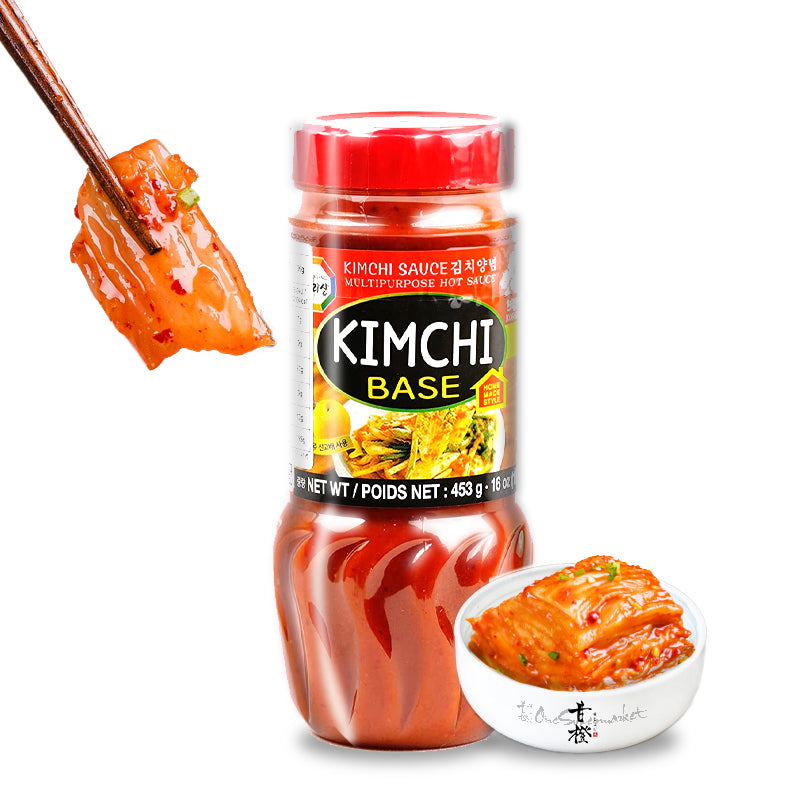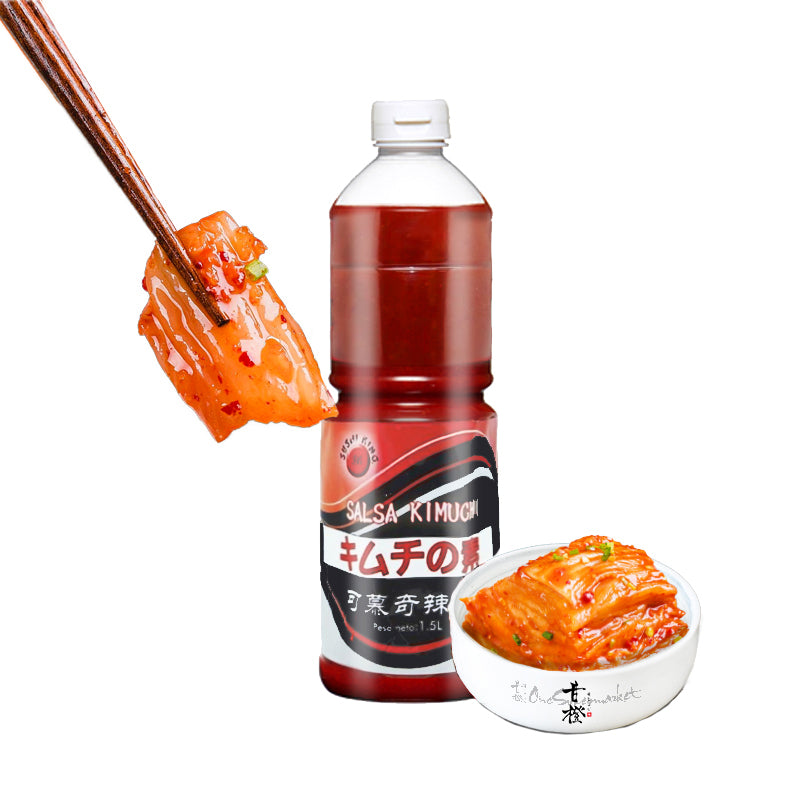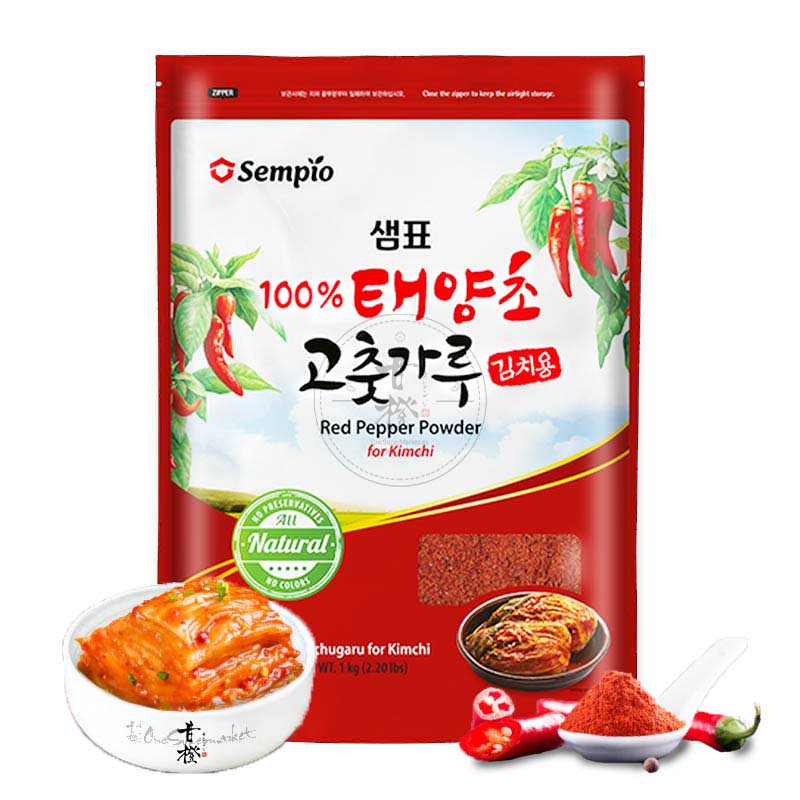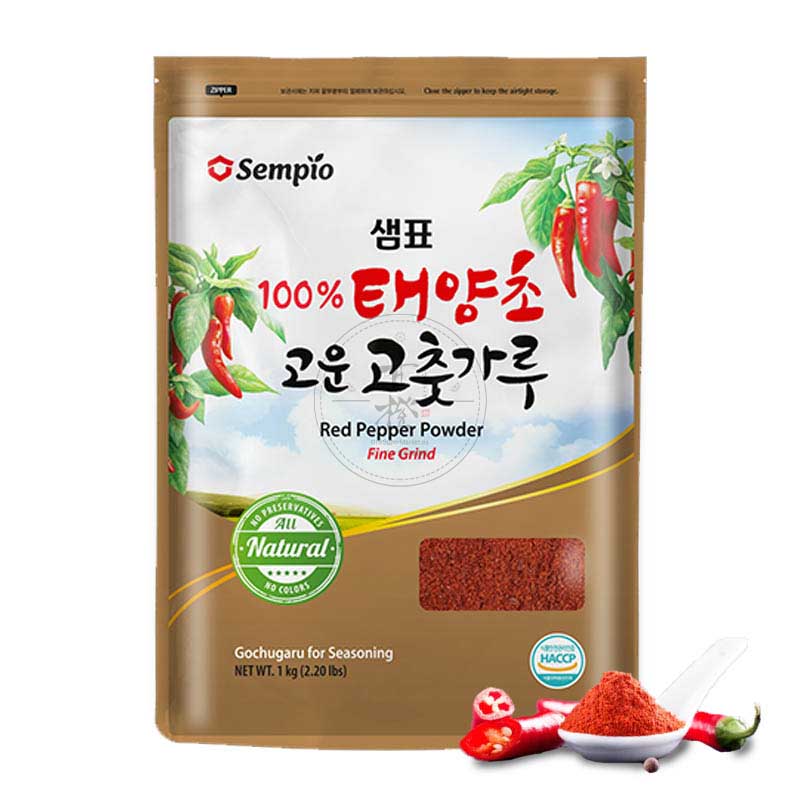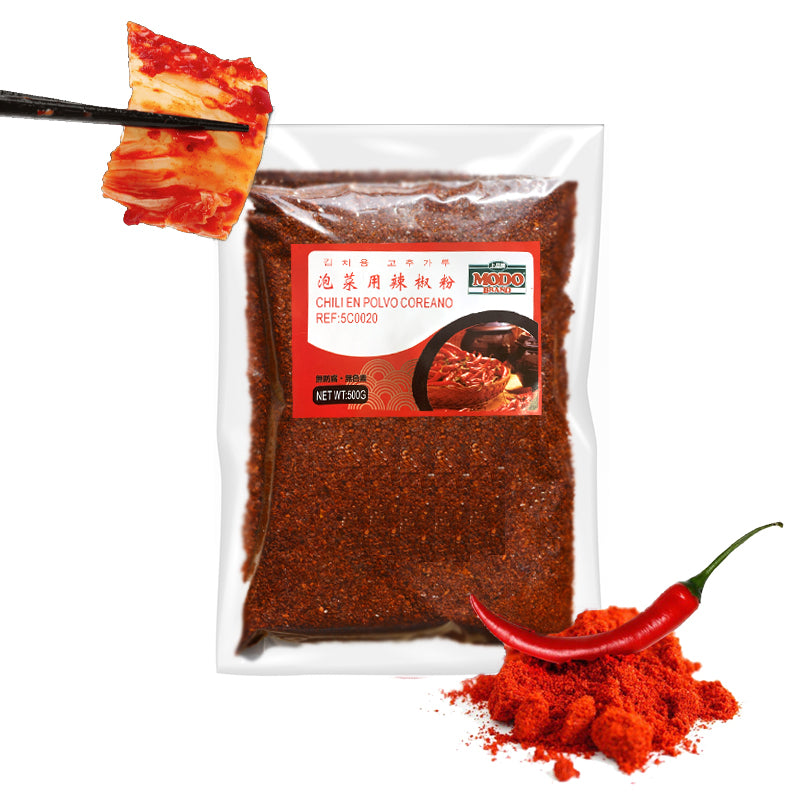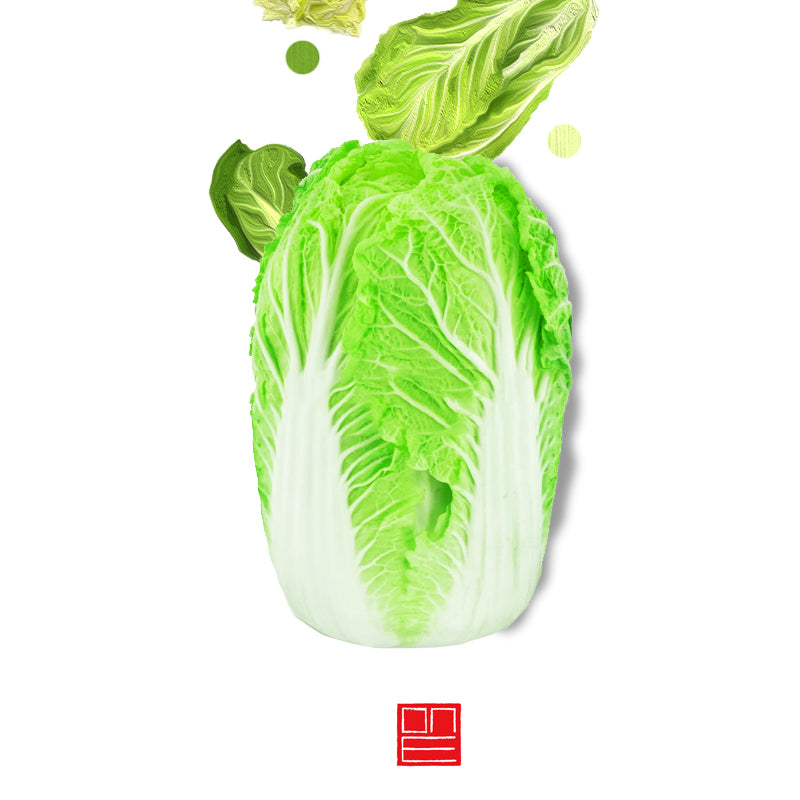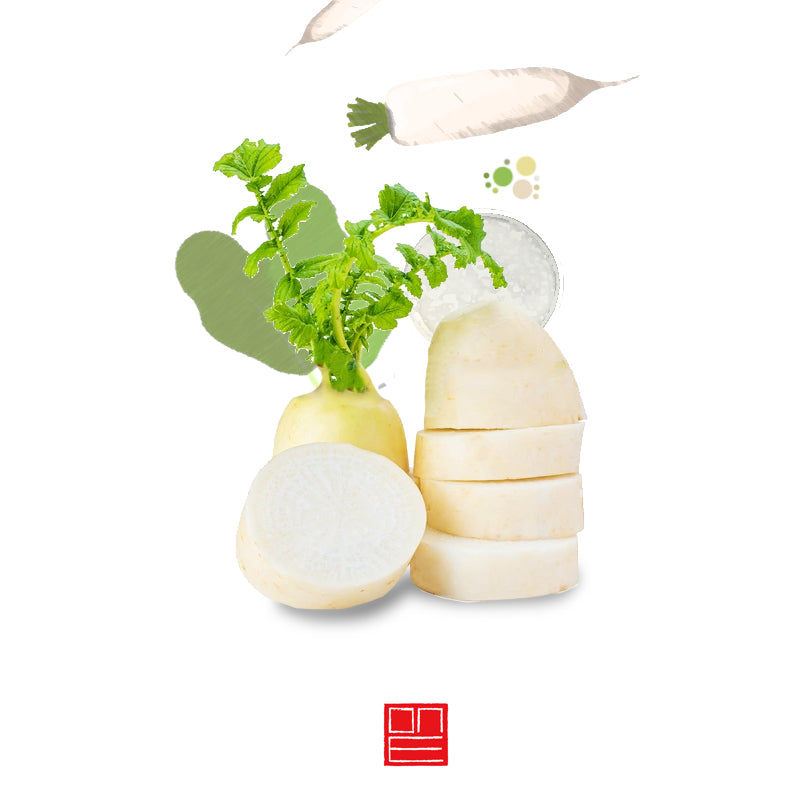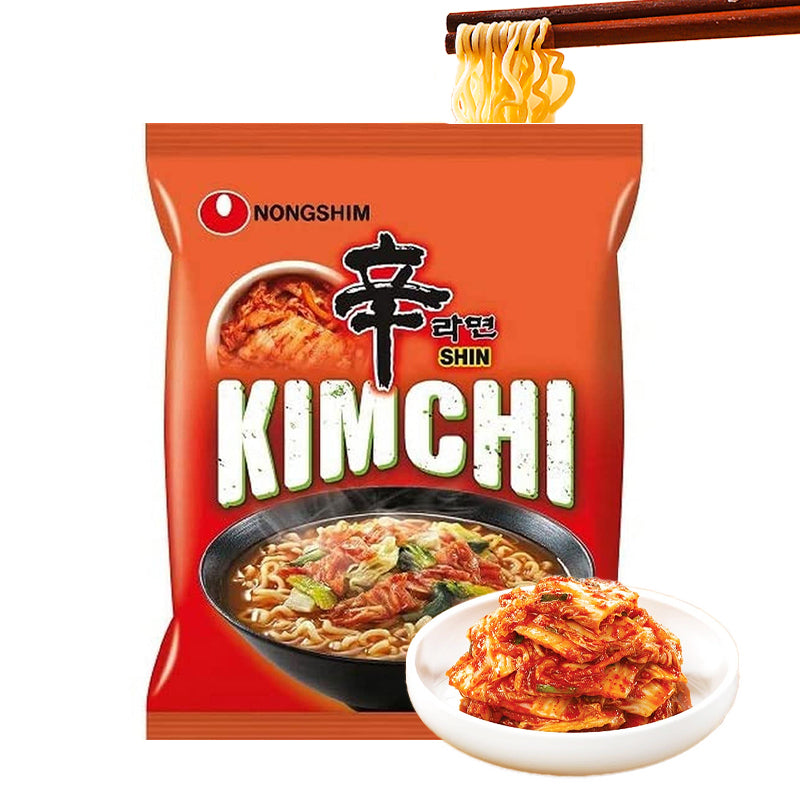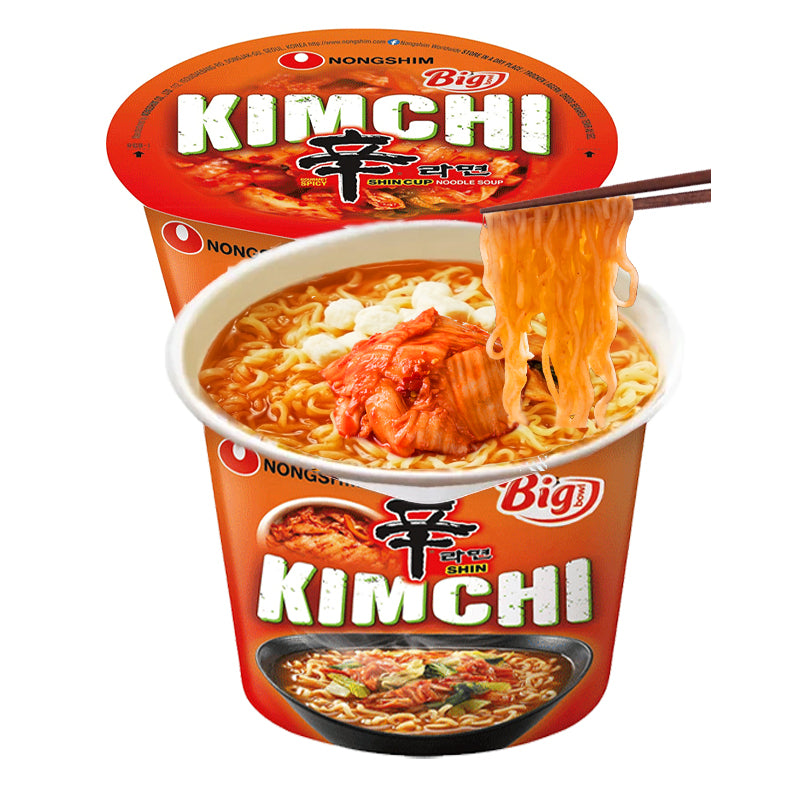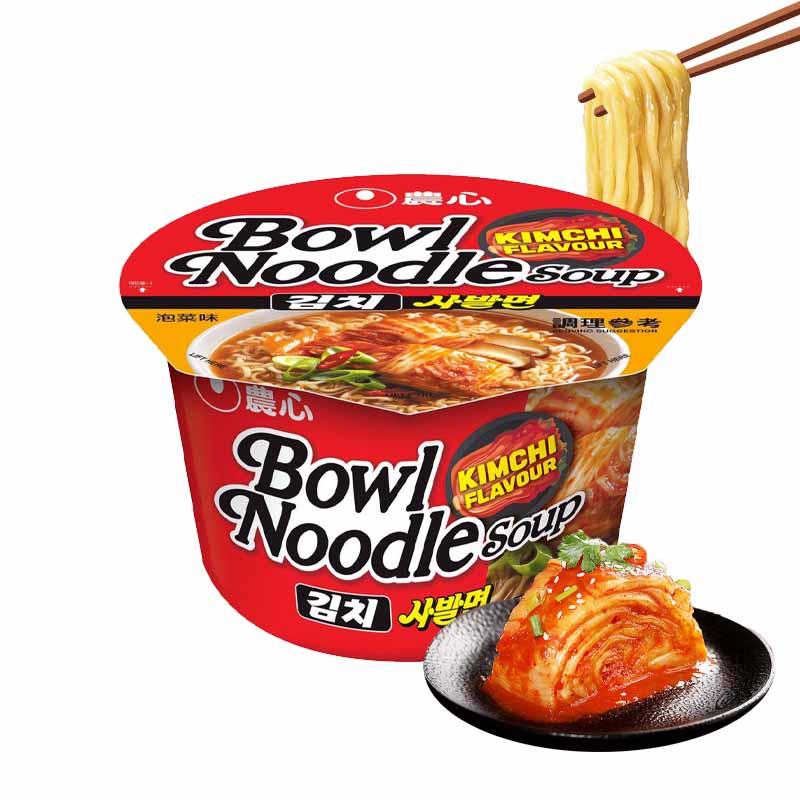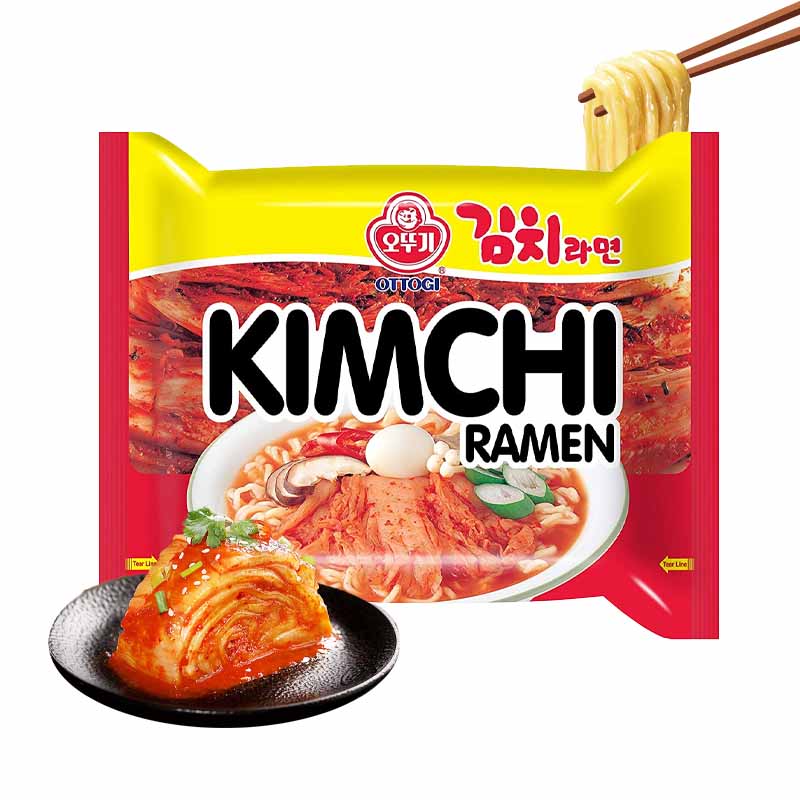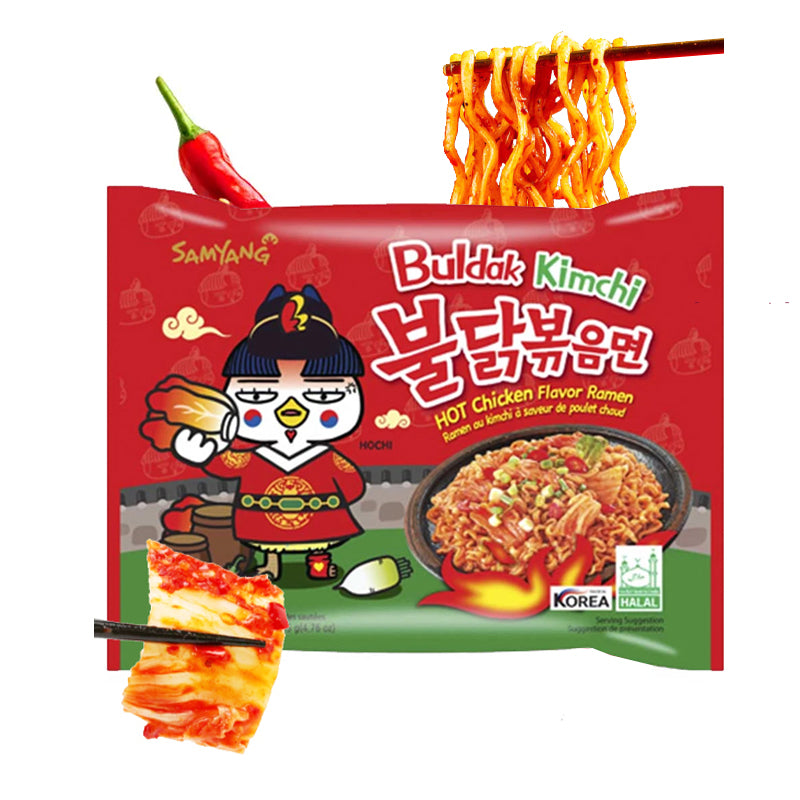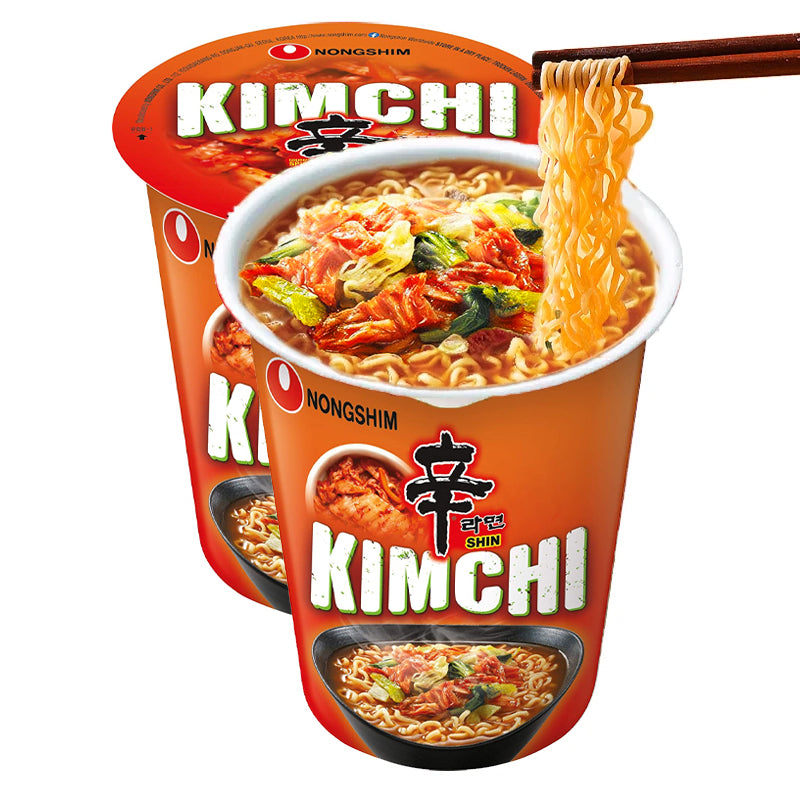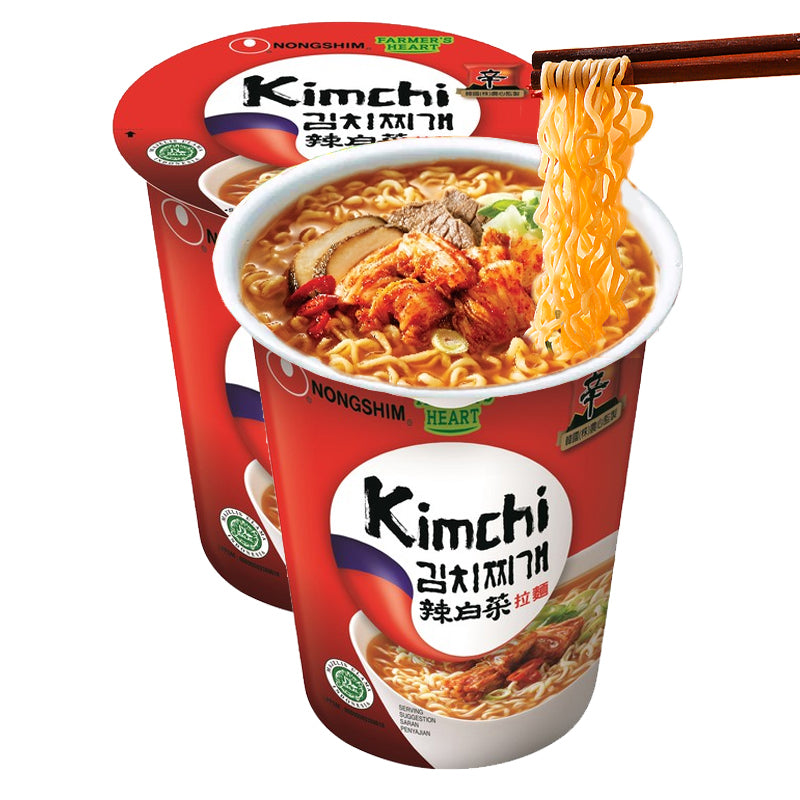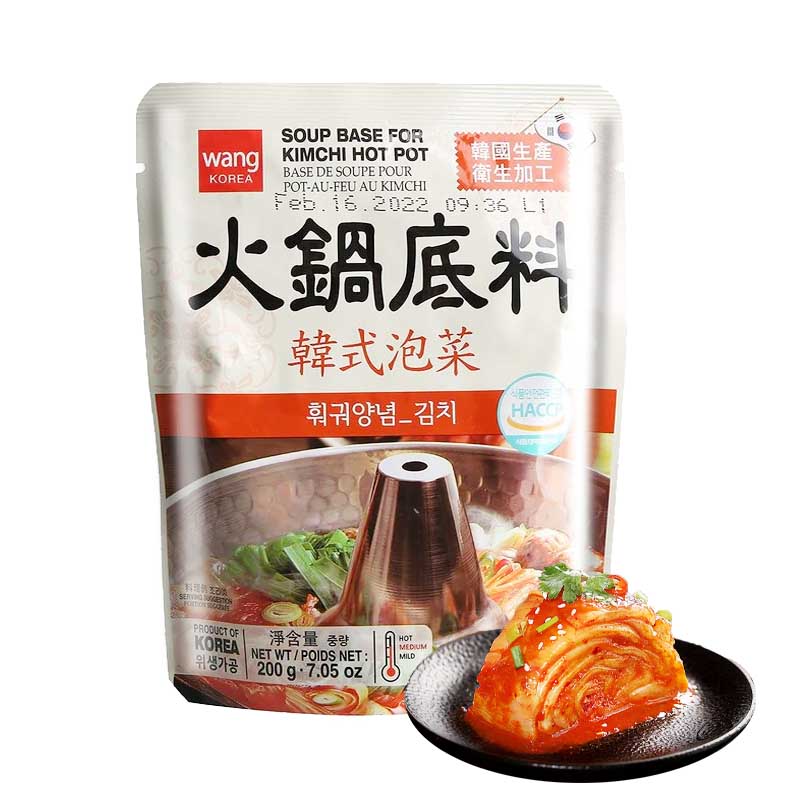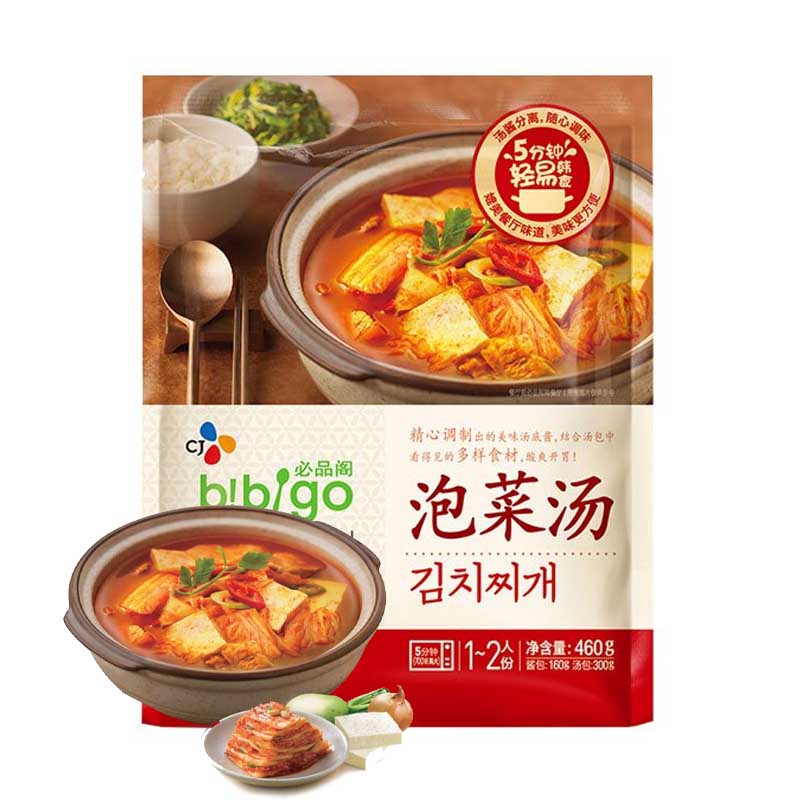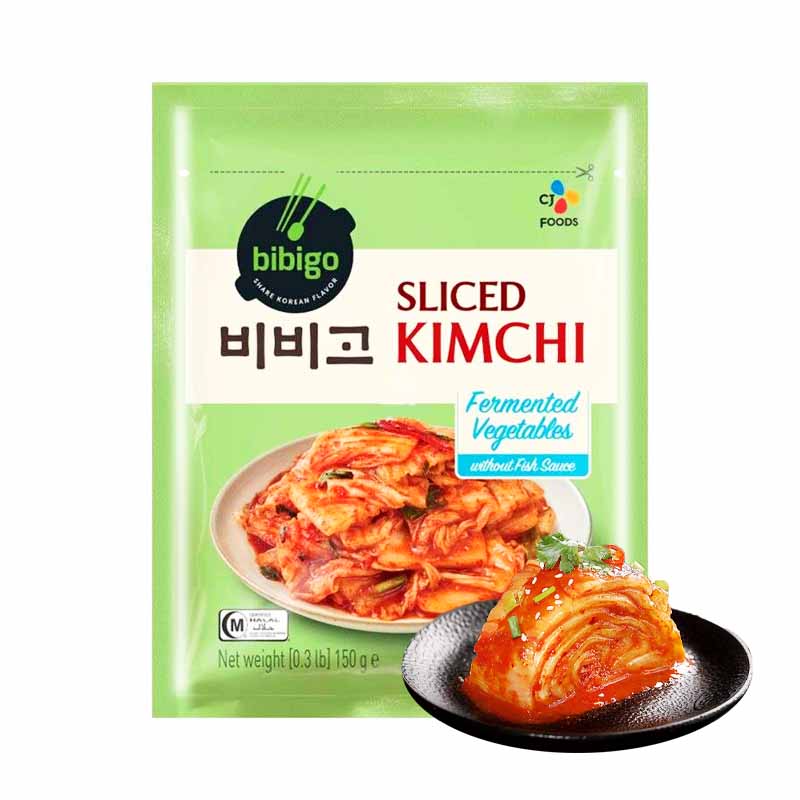Kimchi
What it is, Uses, Types, Recipes, Buy
Throughout this article, we will explore the charm of kimchi from multiple angles. First, we will learn about the fascinating history of kimchi and its role in Korean culture. Below, we will detail an authentic kimchi recipe, so you can prepare this delicious dish in your own home.
Kimchi is not only a food, but also a sauce - kimchi sauce, a rich and versatile ingredient that can add a deep, spicy touch to a variety of dishes. We'll talk about how it's made and where you can buy it.
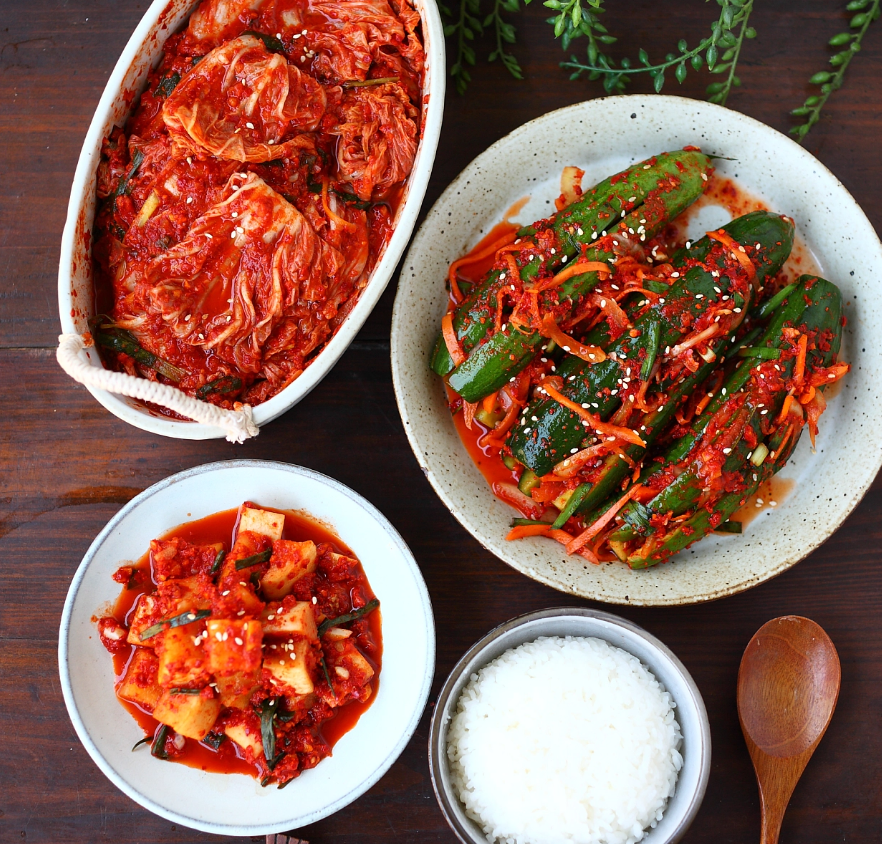
What is Kimchi?
Kimchi is a traditional Korean dish whose components can vary, but generally include some combination of vegetables, garlic, ginger, chili peppers, salt, and fish sauce. The mixture is pickled and fermented, which was originally a way to preserve vegetables during the winter months. Cabbage is the most common vegetable used to make kimchi, although carrots, radishes, cucumbers, and scallions are also frequently used. There are hundreds of kimchi recipes that vary depending on the region and season in which they are produced, and it is very easy to make it a vegan dish while keeping all the ingredients plant-based.
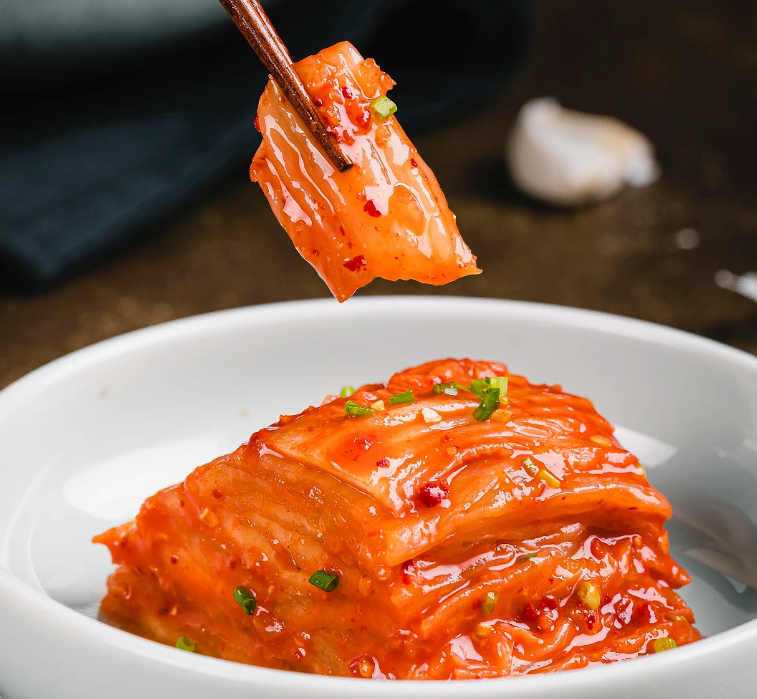
Uses of Kimchi
In Korean culture, kimchi is served with almost every meal, including breakfast. Kimchi is not only eaten on its own as a side dish or appetizer, but is also used as an ingredient in a variety of dishes. Kimchi jjigae, a traditional stew made with kimchi, is perhaps one of its most popular uses. This fermented food is also used to flavor fried rice, stir-fry dishes, noodles, sandwiches, and even pizza.
What does it taste like?
The flavor of kimchi is complex and varies widely depending on the recipe. The main flavor notes you'll find in kimchi include sour, spicy, and umami. The flavor will also vary depending on the vegetables you choose, the length of fermentation, and the amount of salt or sugar used.
Since kimchi is a fermented dish, its most prominent flavor is typically sour. Lactic acid produced by bacteria during fermentation creates a strong, pungent flavor similar to sauerkraut. Garlic, if present in kimchi, intensifies its flavor during fermentation. Kimchi can also be spicy, depending on how much pepper is used and what type, and can have ingredients such as fish paste, fish sauce, or anchovies; anything fish-oriented will give you a strong umami note. Kimchi made without fish will taste lighter and fresher, especially if it is made with radishes or cucumbers.
Kimchi Type
- radish kimchi
- Dongchimi
- water kimchi
- white kimchi
- fresh kimchi
- kimchi turnip
- radish kimchi
- Sesame leaf kimchi
- Cucumber Sobak
- Green onion kimchi
- Geukji : This kimchi is eaten in the coastal area of Chungcheongnam-do, and is called 'geguk' because it is made with the broth left after eating crabjang.
- Beef and Red Pepper Kimchi – North Korean kimchi revealed in Lee Man-gap episode 205, kimchi made with beef and crispy red pepper.
- Bossam Kimchi: A local Gaeseong dish, kimchi made with various fillings and wrapped in cabbage leaves as if wrapped in cloth. It is also called ssam kimchi.
- Jang Kimchi: Kimchi made with soy sauce and vegetables marinated in soy sauce instead of salt and salted fish. It is a type of watery kimchi with a lot of soup, and is mainly used in hammocks in the royal family, noble families, and temples. Therefore, many valuable ingredients such as mushrooms and fruits are included. Since it is kimchi that has been eaten since before the introduction of red pepper, red pepper is not added or a small amount is added.
- Godulpagi Kimchi : Kimchi mainly eaten in the eastern part of Jeollanam-do (Suncheon). If you eat Godeulpagi Kimchi that has been soaked for a day or two, it has a unique sour taste.
- Nabak kimchi: It is a kimchi that is eaten by pouring red pepper powder with water and adding red pepper powder and soaking radish and bok choy, etc., cut into squares. Basically, it is usually seasoned with red pepper powder and water little by little.
Receta de Kimchi
TIEMPO DE PREPARACIÓN
30 min a 45 min
Ingredientes
- 1 cabeza de col napa mediana (aproximadamente 2 libras)
- 1/4 taza de sal de mar sin yodo o sal kosher
- Agua, preferiblemente destilada o filtrada
- 1 cucharada de ajo rallado (5 a 6 dientes)
- 1 cucharadita de jengibre fresco pelado y rallado
- 1 cucharadita de azúcar granulada
- 2 cucharadas de salsa de pescado o pasta de camarón salada, o 3 cucharadas de agua
- 1 a 5 cucharadas de copos de pimiento rojo coreano (gochugaru)
- 200gramos de rábano coreano o rábano daikon, pelado y cortado en bastones
- 4 cebolletas medianas, recortadas y cortadas en trozos de 2,5 cm
Utensilios
- Tabla de cortar y cuchillo
- Un tazón grande
- Guantes (opcional pero muy recomendado)
- Platos y algo para presionar el kimchi, como un frasco o una lata de frijoles
- Colador
- Un frasco de 1 cuarto de galón limpio con tapa de conservas o tapa de plástico
- Un tazón o plato para colocar debajo del frasco durante la fermentación
Instrucciones
- 1 Corta la col. Corta la col longitudinalmente a través del tallo en cuatro partes. Corta los núcleos de cada pieza. Corta cada cuarto transversalmente en tiras de 2 pulgadas de ancho.
- 2 Sazona la col. Coloca la col en un tazón grande y espolvorea con la sal. Con tus manos, masajea la sal en la col hasta que empiece a ablandarse un poco. Añade suficiente agua para cubrir la col. Coloca un plato encima de la col y presiónalo con algo pesado, como un frasco o una lata de frijoles. Déjalo reposar de 1 a 2 horas.
- 3 Enjuaga y escurre la col. Enjuaga la col bajo agua fría 3 veces. Déjala a un lado para escurrir en un colador durante 15 a 20 minutos. Mientras tanto, prepara la pasta de especias.
- 4 Haz la pasta de especias. Mezcla el ajo, el jengibre, el azúcar y los copos de pimiento rojo. Añade la salsa de pescado y mezcla hasta obtener una pasta. Añade los bastones de rábano y las cebolletas.
- 5 Mezcla la col y la pasta de especias. Asegúrate de que cada hoja esté cubierta de pasta, y que entre bien entre las capas.
- 6 Empaca el kimchi en el frasco. Llena el frasco con el kimchi, presionando hacia abajo para que la col esté sumergida en el líquido de la pasta de especias. Deja al menos 1 pulgada de espacio en la parte superior del frasco.
- 7 Fermenta el kimchi. Deja el frasco a temperatura ambiente durante 1 a 5 días. Puede que veas burbujas en el interior del frasco y el líquido puede salirse. Este es el proceso de fermentación.
- 8 Almacena en el frigorífico. Una vez que el kimchi esté fermentado a tu gusto, asegúrate de que la col esté bien sumergida y guarda el frasco en el frigorífico. El kimchi seguirá fermentando en el frigorífico, aunque más despacio. ¡Disfruta de tu kimchi casero!
Notas de la receta
- El kimchi se puede comer inmediatamente después de hacerlo, pero está mejor después de una semana o dos de fermentación.
- Guarda el kimchi en el frigorífico para frenar la fermentación. Durará varios meses.
Frequent questions
Can I eat unfermented kimchi?
Kimchi can be eaten immediately after being prepared, however, it is usually fermented for at least a few days to a few weeks before serving, so that the flavors can fully develop. Store fermented kimchi in the refrigerator for up to a month. You'll know when it's past its prime when it becomes too acidic and the cabbage becomes mushy.
How healthy is kimchi?
Kimchi is great for you! It is full of probiotics and antioxidants and is also a great source of vitamins A and C.
What is the difference between kimchi and kimchee?
Although they are both the same dish, kimchee is the traditional way South Koreans spell it. Meanwhile, kimchi is the standard Japanese spelling.
To buy
Blog
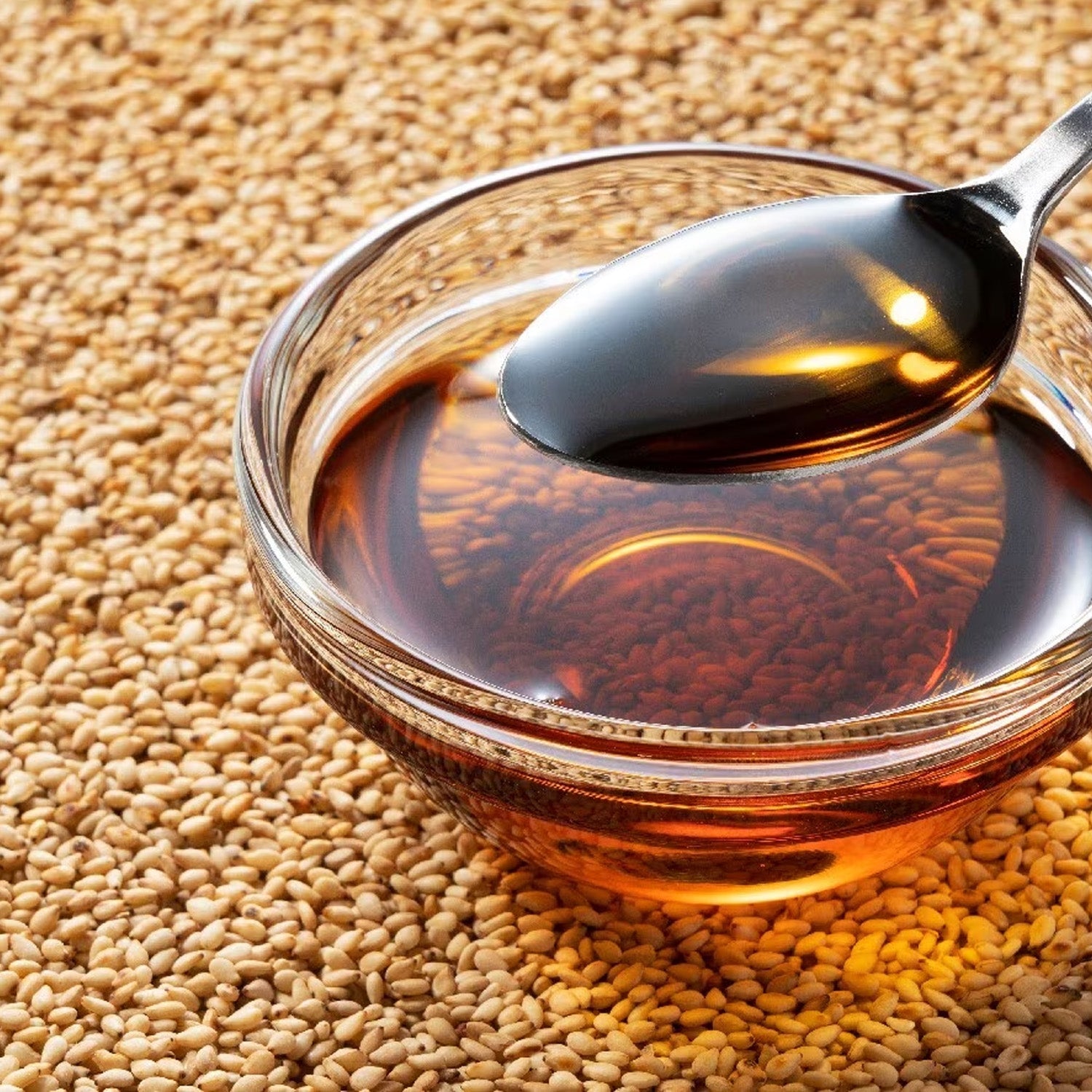
Benefits of Sesame Oil: Health and Cooking at its Best
The numerous benefits and uses of sesame oil in cooking, personal care and health. Learn how to take advantage of its antioxidant and anti-inflammatory properties.
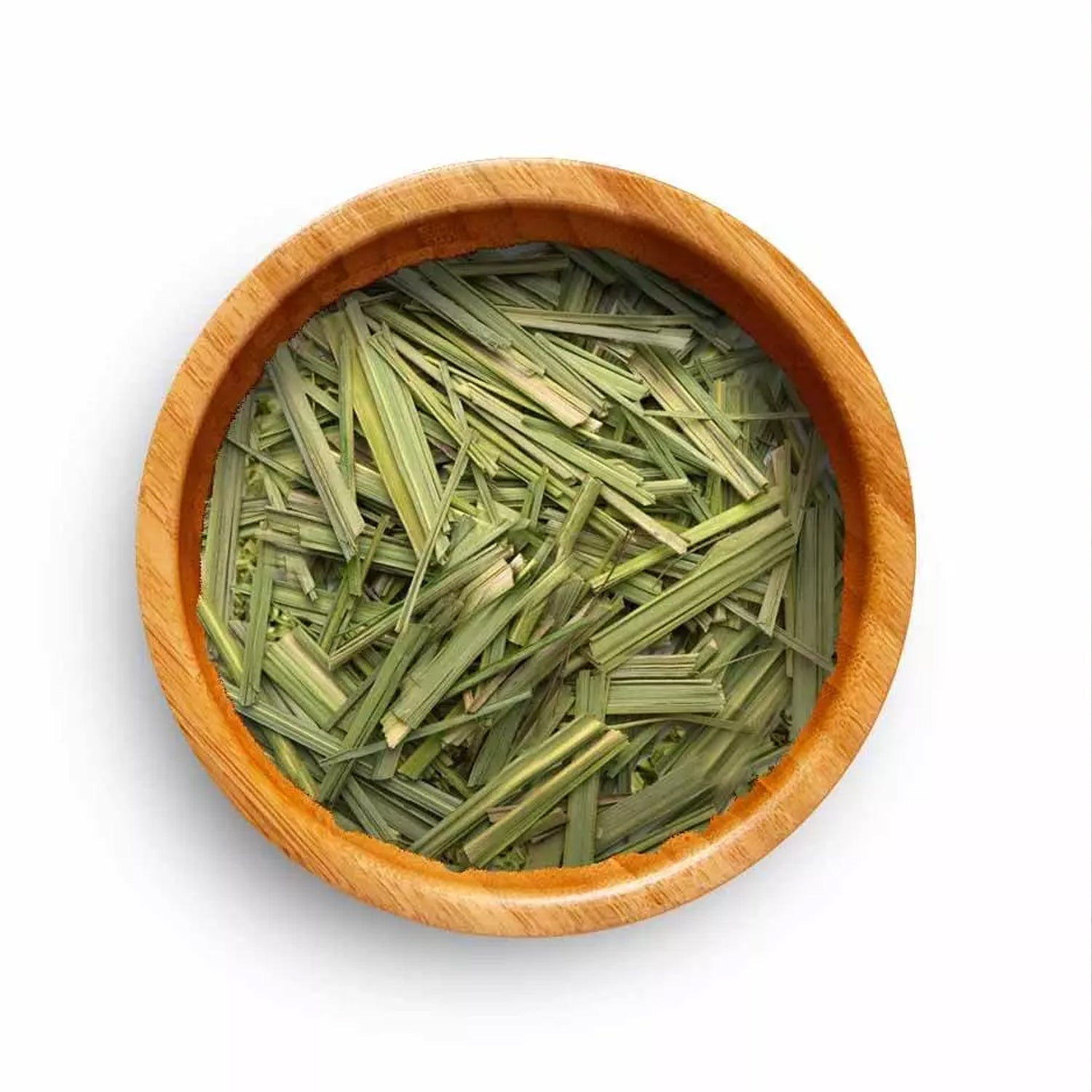
Benefits of Lemon Grass: Culinary and Medicinal Uses
Lemon Grass can transform your favorite dishes and improve your health. Learn about its culinary uses, medicinal benefits, and featured recipes to incorporate this versatile plant into your daily l...
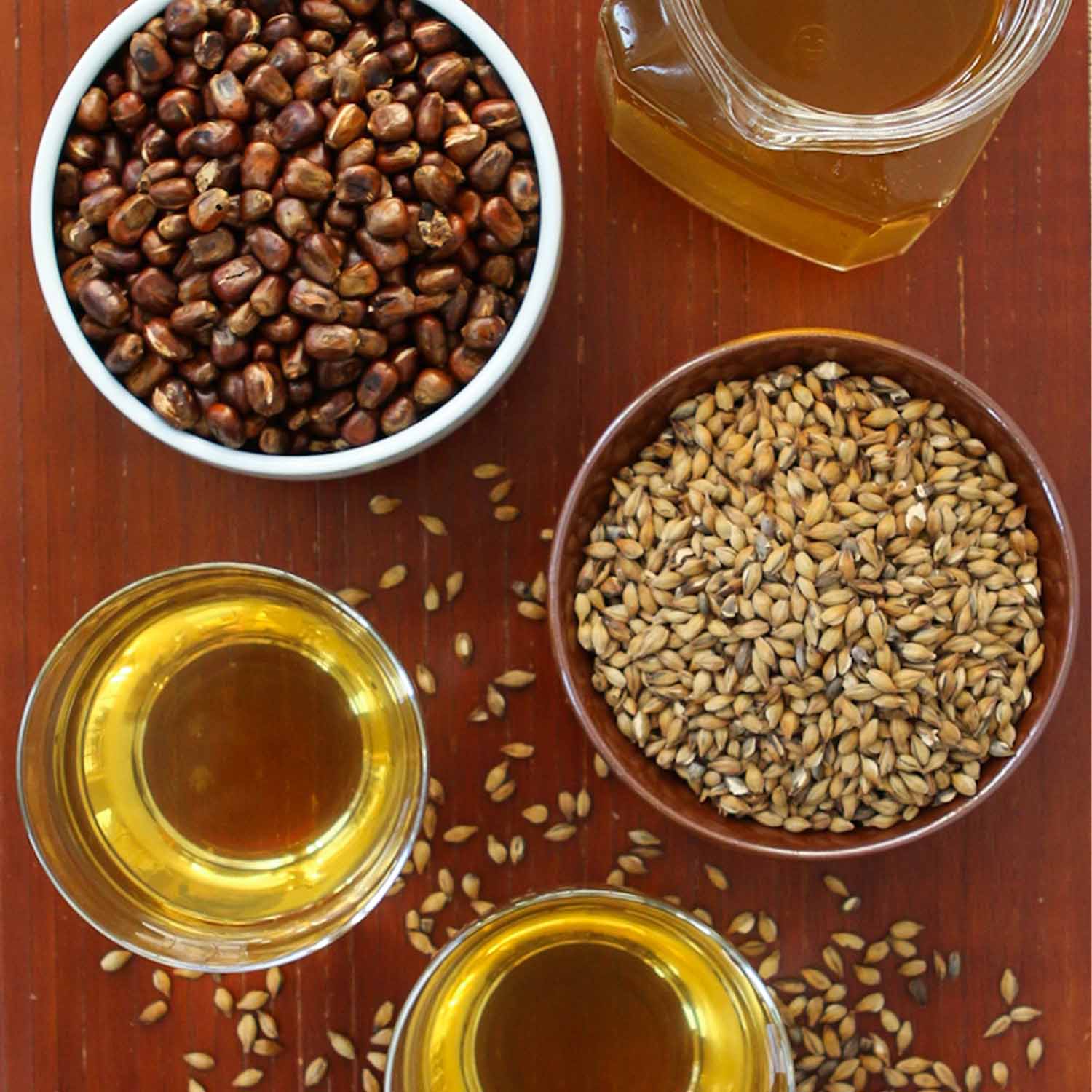
Korean Barley Tea: Tradition and Health in Every Cup
Korean barley tea, known as bori-cha. Learn about its origin, health benefits and how to prepare it at home. A caffeine-free drink rich in antioxidants. Discover the tradition and benefits of this ...



